Abstract
Cassava varieties resistant to cassava mosaic disease (CMD) and cassava brown streak disease (CBSD) are needed for the food and income security of the rural poor in eastern and southern Africa (ESA). The International Institute of Tropical Agriculture led five national cassava breeding programs (Malawi, Mozambique, Kenya, Tanzania and Uganda) in virus-cleaning and exchanging elite cassava germplasm resistant to both diseases. This paper documents the experiences and lessons learned from the process. Thirty-one clones (25 elite, two standard and four national) were submitted by the five breeding programs to the Natural Resources Institute and Kenya Plant Health Inspectorate Services for virus cleaning and indexing. Subsequently, ca 75 invitro virus-indexed plantlets per clone were sent to Genetic Technologies International Limited (GTIL), a private tissue culture (TC) lab in Kenya, and micro-propagated to produce ≥1500 plantlets. After fulfilling all the formal procedures of germplasm exchange between countries ≥300 plantlets per clone were sent to each partner country. National check clones susceptible to CMD/CBSD were sent only to their countries of origin. In each country, the in-vitro plantlets were acclimatized under screen house conditions and transferred to clean isolated sites for field multiplication. All the clones were cleaned of the viruses, except Tomo. The cleaning process was slow for F19-NL, NASE1, and Kibandameno and TC micro-propagation at GTIL was less efficient for Pwani, Tajirika, NASE1, and Okhumelela than for the other clones. Difficulties in cleaning recalcitrant clones affected the timeline for establishing the multi-site evaluation trials in target countries. The initiative is the one of the kind to successfully clean and exchange elite germplasm as a joint action to combat CBSD in ESA. Adequate preparation in terms of infrastructure and personnel are critical to successfully receiving and adapting the indexed in-vitro plants as new germplasm.
Keywords: Exchange, In-vitro, Germplasm, CBSD and CMD





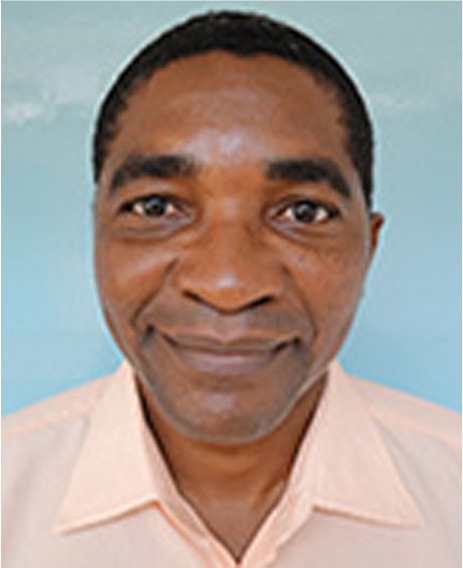
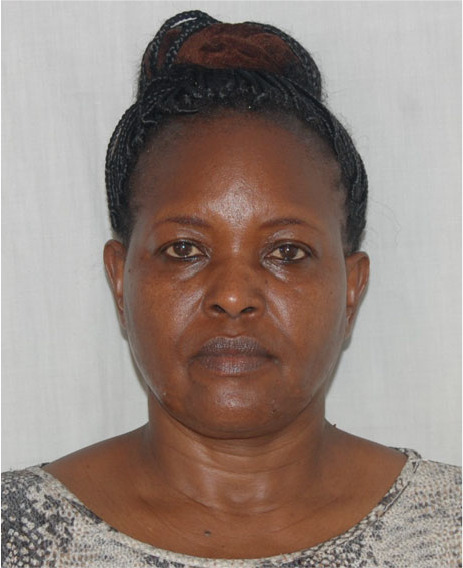
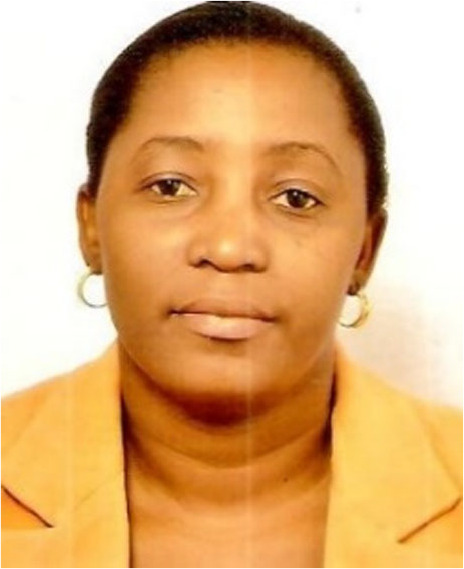
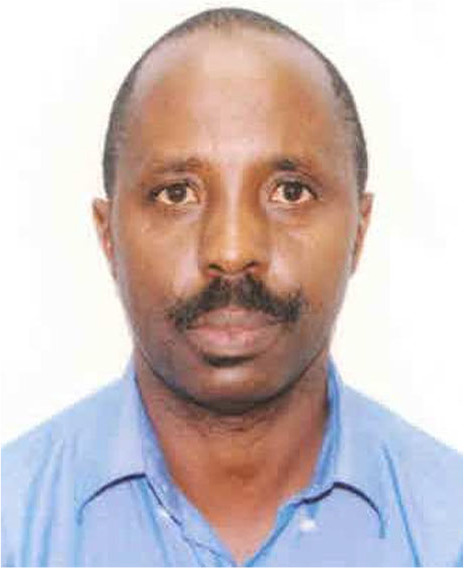
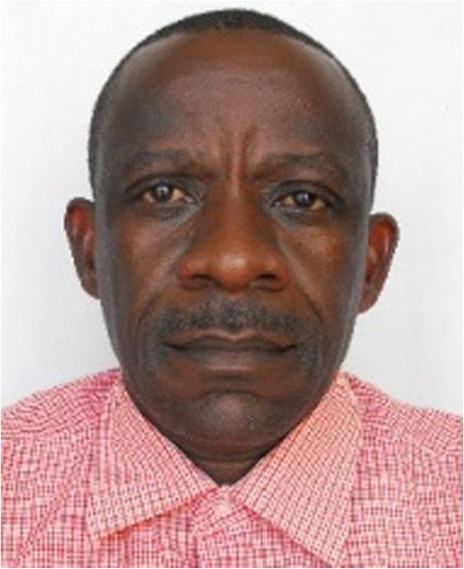
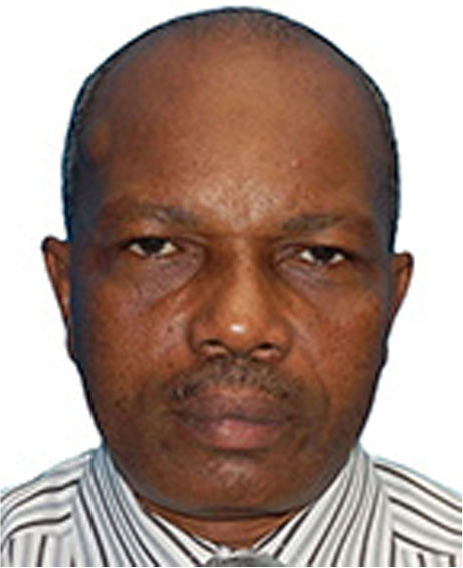

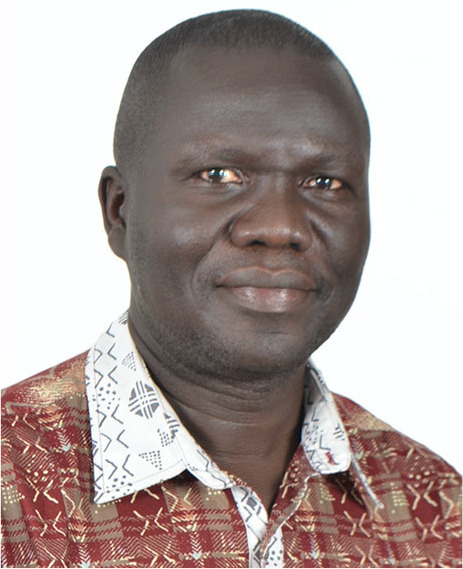

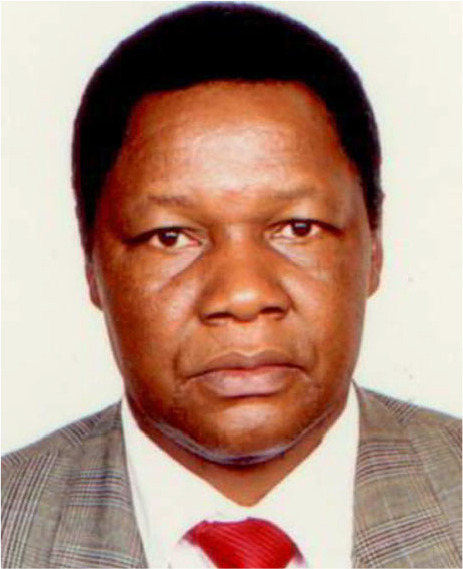





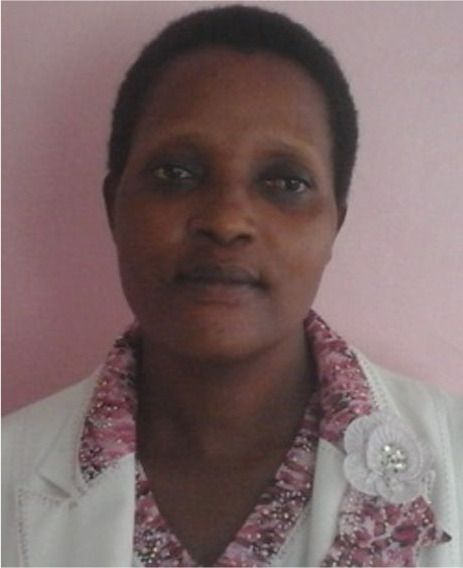



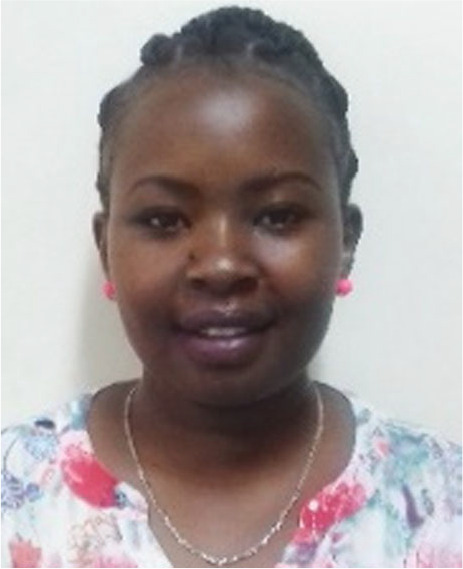




1 Introduction
Cassava (Manihot esculenta Crantz) is one of the most important food staples in sub-Saharan Africa (SSA), ranked as the number one root crop followed by yam and sweetpotato (FAOSTAT 2017). With over 140 MT of annual root production (FAOSTAT 2017), cassava is the major source of carbohydrates in the diet of millions of people in SSA and is grown as a famine reserve crop owing to its tolerance of harsh environmental conditions (Jarvis et al. 2012; Nassar and Ortiz 2007). Moreover, the crop has enormous potential to graduate into an important economic driver within the agriculture sector in different SSA countries where entrepreneurs have started to exploit its industrial business potential to produce high quality flour, starch, beverages and animal feeds.
However, the crop is threatened by two viral diseases: cassava brown streak disease (CBSD) and cassava mosaic disease (CMD), and these are currently the principal biotic factors affecting production in East and Southern Africa (ESA) (Alicai et al. 2007; Legg et al. 2011). While CMD is of economic importance across SSA, CBSD remains localized in ESA, although there is a high risk of the disease spreading to West Africa unless contained (Legg et al. 2011). CBSD is caused by two virus species, Cassava brown streak virus (CBSV) and Ugandan cassava brown streak virus (UCBSV) in the family Potyviridae, genus Ipomovirus (Mbanzibwa et al. 2009). Here, we refer to these collectively as cassava brown streak ipomoviruses (CBSIs). In addition to the two species groupings, several strains of each species have been reported (Mbanzibwa et al. 2009; Mohammed et al. 2012; Ogwok et al. 2015). These interact with the host differently (Mohammed et al. 2012; Kaweesi et al. 2014; Legg et al. 2015) and produce symptoms of varying severity that complicate the evaluation and selection processes in developing resistant varieties. A further important factor in the epidemiology of these viruses, causing CBSD and CMD, is the relative abundance of the whitefly vector, Bemisia tabaci (Maruthi et al. 2005). Whiteflies occur in greatly varying abundance in the regions where both diseases occur (Jeremiah et al. 2015), and this in turn results in significantly different levels of inoculum pressure for the two diseases. Consequently, it is essential to evaluate cassava germplasm that is potentially resistant to both CBSD and CMD in a wide range of agro-ecologies.
Collaborative efforts with different national cassava breeding programs have identified germplasm resistant or tolerant to CBSD/CMD. However, these have been evaluated so far under a narrow range of conditions of environment, virus species/strains, and vector abundance (Legg et al. 2011). The exchange of germplasm between countries enhances the diversity of germplasm available to partner countries. It provides breeders with fresh opportunities to evaluate and release new varieties as well as to use them as parents in efforts to breed new genotypes resistant to CBSD and CMD.
Past experiences of CMD pandemic management have underlined the significance of identifying and deploying host resistance as well as the importance of joint action among partners in the affected countries through elite germplasm exchange (Ntawuruhunga et al. 2013). Open quarantine was used effectively in efforts to manage the CMD pandemic (Mohamed 2002), but this is appropriate only under emergency conditions and where introduced germplasm is carried just a short distance over the border into the receiving country. The approach has risks of introducing other diseases/pests into new unaffected areas (Ntawuruhunga and Legg 2007). Sharing of botanical seeds is less risky, but the high level of genetic variability among individual seeds means that more time and funds are required at national level to develop promising varieties (Ntawuruhunga et al. 2013). Virus-indexed tissue culture (TC) plants are the form recognised by quarantine regulators for the exchange of elite germplasm among countries (Frison 1994; Lebot 2009; Ntawuruhunga et al. 2013).Their use also ensures that fair comparisons can be made among clones that are planted in evaluation trials without propagule-borne virus infection.
Breeding for dual resistance is currently being pursued as the most cost-effective and sustainable way to manage the devastating effects of the viral diseases in ESA. Although high resistance for CMD has been found, only limited success has been documented for CBSD. The desired goal of the breeding efforts is stable genotypes with resistance to both viral diseases. Work described in this paper has helped partner countries to access clean in-vitro stocks of a diverse set of resistant germplasm as vital precursor to coordinated regional trials aimed at identifying new resistant variety options to mitigate threats of CMD and CBSD. The work was undertaken in the early stages of the project “New Cassava varieties and Clean Seed to Combat CMD and CBSD” (5CP), and aimed at exchanging elite germplasm among the five countries most affected by CMD and CBSD for adaptability breeding.
1.1 Target countries
Kenya, Malawi, Mozambique, Tanzania and Uganda (Fig. 1) are the countries most severely affected by both CBSD and CMD and agreed to share their five best cassava clones with respect to resistance to both diseases.
Fig. 1.
A map showing partner countries that exchanged elite cassava germplasm and sites for regional trials
2 Target cassava germplasm
The targeted germplasm (Table 1) included 25 elite clones contributed by partner countries, two standard regional susceptible check clones, i.e., Kibandameno, a CMD susceptible check from Kenya, and Albert, a CBSD susceptible check from Tanzania. The elite clones were selected for exchange based on resistance to CMD and CBSD, their root yield and dry matter content. Four other clones were included as national checks as follows: Tomo (susceptible to CBSD) from Mozambique, Mbundumali (susceptible to CBSD and CMD) from Malawi, and Kiroba (susceptible to CMD) and Mkombozi (susceptible to CBSD) from Tanzania.
Table 1.
Elite germplasm cleaned, multiplied and exchanged among five countries in eastern and southern Africa from 2012 to 2014
| Variety name | Country of origin | Fresh root yield (t/ha) | DM content (%) | Reaction to diseases | Release status | |
|---|---|---|---|---|---|---|
| CMD resistance | CBSD resistance | |||||
| KBH2002/066 | Tanzania | 34.1 | 28.0 | Moderate | Moderate | Released |
| Pwani | Tanzania | 50.8 | 29.2 | Moderate | Moderate | In pipeline |
| Mkumba | Tanzania | 23.3 | 27 | Weak | Moderate | In pipeline |
| KBH2006/026 | Tanzania | 30.0 | 29.0 | Moderate | Moderate | Released |
| Kizimbani | Tanzania | 28.6 | 28.0 | Moderate | Moderate | Released |
| Kiroba* | Tanzania | 20.0 | 32.0 | Weak | Moderate | Released |
| Mkombozi* | Tanzania | >20 | 30 | Strong | Weak | Released |
| Albert** | Tanzania | fair | good | Strong | Susceptible | Not released |
| Sangoja | Malawi | 35 | 33 | Moderate | Moderate | Released |
| Sauti | Malawi | 30 | 34 | Moderate | Moderate | Released |
| Yizaso | Malawi | 35 | 33 | Moderate | Moderate | Released |
| Kalawe | Malawi | 28 | 36 | Moderate | Moderate | Released |
| CH05/203 | Malawi | 33 | 34 | Moderate | Moderate | In pipeline |
| Mbundumali* | Malawi | 25 | 37 | Susceptible | Susceptible | Recommended |
| Coliacanana | Mozambique | 20.0 | 33.0 | Weak | Moderate | Released |
| N’ziva | Mozambique | 22.0 | 35.1 | Weak | Moderate | Released |
| Okhumelela | Mozambique | 20.0 | 32.8 | Moderate | Moderate | Released |
| Orera | Mozambique | 23.0 | 32.0 | Weak | Moderate | Released |
| Eyope | Mozambique | 25.0 | 32.0 | Moderate | Moderate | Released |
| LML/2008/363 | Kenya | 69 | 27 | Moderate | Moderate | In pipeline |
| F19-NL | Kenya | 39.4 | 25 | Moderate | Moderate | In pipeline |
| Tajirika | Kenya | 61 | 25.7 | Moderate | Moderate | Released |
| Shibe | Kenya | 68 | 26 | Moderate | Moderate | Released |
| F10–30-R2 | Kenya | 58 | 40 | Moderate | Moderate | Adv. yield trial |
| Kibandameno** | Kenya | 26.1 | 40 | Susceptible | Susceptible | Not released |
| TZ130 | Uganda | – | – | Strong | Moderate | Released |
| NASE14 | Uganda | 31.2 | 35.0 | Strong | Moderate | Released |
| NASE18 | Uganda | 38.6 | 35.5 | Strong | Moderate | Released |
| NASE1 | Uganda | 14.9 | 32.5 | Strong | Moderate | Released |
| NASE3 | Uganda | <10 | 30.0 | Moderate | Moderate | Released |
* National susceptible checks returned only to countries of origin; ** Standard susceptible checks distributed with the elite clones
2.1 Partner institutions
IITA led the initiative through its Eastern Africa Hub in Dar es Salaam Tanzania. The five partner countries were represented as follows: Uganda by the National Agricultural Research Organization (NARO), Kenya by the Kenya Agricultural and Livestock Research Organisation (KALRO), Tanzania by the Department of Research and Development, (DRD), Mozambique by Instituto de Investigação Agrária de Moçambique (Agricultural Research Institute of Mozambique -IIAM), and Malawi by the Department for Agricultural Research Services (DARS). Other partner institutions were the Natural Resources Research Institute (NRI) in the United Kingdom, Kenya Plant Health Inspectorate Services (KEPHIS) and GTIL in Kenya.
2.2 Main steps for the exchange and management of elite cassava germplasm
Four main steps (Fig. 2) were undertaken in the process of exchanging and managing the elite germplasm in the target countries. Figure 3 illustrates the timelines.
Fig. 2.
Schematic flow of the cleaning, multiplication and exchange process of the cassava elite germplasm
Fig. 3.
Timelines for the process of cleaning, multiplication and exchange of the cassava elite germplasm
2.3 Obtaining elite cassava clones from partner countries
Between August and December 2012 each country freely agreed to submit to NRI and KEPHIS ca 25 stem cuttings obtained from asymptomatic plants of each of the best five clones (Table 1) for virus cleaning. The asymptomatic plants were used mainly to ease the task and cost of the cleaning process. To minimize chances of within-clone variation (mericlones), stem cuttings of a given clone were collected from one plant stand by breeders who had wide knowledge of the clones’ agronomic performance as well as their reaction to the diseases. The two laboratories served as a backup to each other in the role of virus cleaning and indexing. Apart fromshort delays in the delivery of the elite clones by some countries, no major challenge was experienced during this step of the process.
2.4 Virus cleaning and indexing
At each laboratory, the stem cuttings were sprouted and grown in pots under quarantine for about 3 months while being observed for virus disease symptoms. At NRI, the asymptomatic plants were separated from the symptomatic (data not presented), and leaf samples from the former were subjected to virus diagnostics using PCR procedures (Aloyce et al. 2013) for cassava mosaic begomoviruses (CMBs) and real-time reverse transcription polymerase chain reaction (real-time RT PCR) procedures (Adams et al. 2013; Tomlinson et al. 2013) for CBSIs. The virus negative plants of each clone were initiated into TC and micro-propagated to raise over 50 plantlets. Meristems were used to initiate TC plants for those clones with only virus positive plants. These were incubated under thermotherapy conditions and left to grow for 8–10 weeks before being reintroduced to the quarantine glasshouse to confirm the absence of the viruses using the diagnostic methods indicated above. At KEPHIS, meristem tips of asymptomatic plants were initiated into TC and later diagnosed for viruses. As at NRI, the virus negative plants were micro-propagated to raise over 50 plantlets. Virus positive plants were incubated in the thermotherapy chamber at 38 °C for 21 days before meristems were chosen for TC initiation. Upon establishment, the plants were tested again for viruses, and the cycle was repeated for the positive plants until negative plants were obtained and micropropagated to produce over 50 plantlets.
2.5 Preparation and dispatch of elite clones
This step involved five activities: micro-propagation, verification of genotype purity and virus-free status, capacity building, mock shipment and shipment of TC plants to partner countries.
-
a)
Micro-propagation: This was done by GTIL a private TC laboratory in Nairobi, Kenya, to increase the number of clean plantlets per clone available to partner countries. From NRI, approximately 75 TC plants per clone were sent to GTIL and micro-propagated (Photo 1a) to produce more than 1500 plantlets per clone, which were sufficient to provide at least 300 plantlets per clone per country. Figure 4 shows the rates of progress of micropropagation at GTIL. While most clones responded positively to the protocols and yielded the required quantities by sub-culturing cycle 5 or 6, others such as Pwani, NASE 1, Tajirika, and Okhumelela were recalcitrant and required media improvement. The recalcitrant clones caused delays and held back the timelines for delivery of the plants to partner countries (Fig. 3)
-
b)
Verification of genotype purity and virus status of the clones: It was considered critical for independent parties to ascertain the genotype purity and virus-free status of the clones before shipment to partner countries. About ten sample plants were acclimatized at GTIL (for materials cleaned by NRI) and at KEPHIS from which later samples of different plant parts (leaves, stem and meristem) were taken and tested for CBSIs and CMBs by Mikocheni Agricultural Research Institute (MARI) in collaboration with IITA. For verification of genotype purity more samples were collected by Biosciences eastern and central Africa (BecA) for fingerprinting. The results of the virus-free status verification are shown (Table 2). Almost all the clones were confirmed to be free of both CBSIs and CMBs. Positive virus tests were recorded for three clones at KEPHIS. Plants associated with virus positive samples were discarded, and virus negative plants were retained. Fingerprinting results (not shown) also confirmed true-to-type genotypes between clone plants handled at the two laboratories.
-
c)
Capacity building (Capacity preparedness): IITA, in collaboration with Uganda’s cassava research program (also a regional Centre of Excellence for Cassava Research) at the National Crops Resources Research Institute (NaCRRI), conducted a 2-week practical training on post-flask management. Each country (except Tanzania, which sent four technicians) was represented by two senior technicians who formed the core team to receive and manage the TC plantlets in their countries. Also, two staff from KEPHIS and GTIL each participated in the training. The trainees were equipped with both theoretical and practical knowledge and skills for preparing and handling TC plants for acclimatization and multiplication purposes. The key infrastructure required was the TC laboratory for in-vitro conservation of clean stocks and insect-proof screen houses for acclimatization work. No improvements were made to the TC laboratories, but screen houses in Malawi and Mozambique were repaired and new ones constructed in Kenya (for KEPHIS) and Tanzania. All these steps were undertaken to ensure that countries were ready and prepared to receive material.
-
d)
Mock shipment: GTIL undertook a mock shipment prior to the actual shipment as a way of testing the readiness of the partners to receive the materials, as well as of identifying possible challenges during shipment. Two cuboid plastic containers (Photo 1a) each with a maximumof 150 plantlets of one clone were sent by courier to Uganda, Tanzania, and Malawi. Permits for both export and import accompanied the shipment as required by regulations. Two challenges were experienced during mock shipment and recommendations were made to GTIL for the actual shipment. Firstly, 150 plantlets per container were overcrowded with intertwined roots that resulted in both root and plant damage during removal from the media. A total of 75 TC plants per container was recommended for the actual shipment. Secondly, all countries reported plant damage resulting from the semi-solid media becoming loose and mixed with plants during shipment. GTIL was asked to use a more solidified medium to ensure that plants would be kept in position during shipment and to improve the placement of the containers in the big boxes. The mock shipment experience also led to GTIL being advised to ensure that consignments were projected to arrive in target countries early in the week for easy clearance and to avoid shipments being held up over weekends. Also, improvements were made to the system used to alert recipient countries about the expected timetable for dispatch of the TC shipments from GTIL and incountry arrival. This enabled national partners to make adequate preparations for receiving the material through liaising with authorities involved in the clearing process.
-
e)
Shipment of TC plants: This is the activity that marked the exchange of the germplasm, between partner countries. The first and major shipment was undertaken by GTIL. Using cylindrical or cuboid plastic transparent containers, GTIL planted in the medium a maximum of 75 plantlets per container, labelled them, allowed two weeks for roots and shoots to develop, sealed, packaged, and sent the plantlets to the partner countries. The containers were placed in bigger boxes and surrounded with shockabsorbing materials. The boxes were also marked fragile and an ‘up’ arrow sign was used to ensure proper handling during transit. The plants were transported by road to Uganda and Tanzania or as cargo with international airlines to Malawi and Mozambique. Kenya, unlike other countries, received hardened plants from GTIL. To facilitate quarantine authority clearance at entry points, all the shipments were accompanied by copies of import permits that were obtained from plant protection offices in respective countries and phytosanitary certificates from KEPHIS. At the point of entry, the consignments were cleared by officials from the national plant protection organizations (NPPOs) of the respective countries and received by the national cassava research teams.
Photo 1.
a micro-propagation at Genetic Technologies International Limited; b acclimitization work at Kibaha; c field multiplication of elite germplasmat Kandiyani,Malawi; and d partners of breeders and virologists in a cassava field in Malawi
Fig. 4.
Variation in in-vitro micro-propagation rates of different cassava clones at GTIL tissue culture lab, Nairobi. Sub-culturing was done after every 3 weeks of growth in-vitro
Table 2.
Virus clean status verification results of TC-derived plants of different cassava clones targeted for regional exchange among five countries in eastern and southern Africa
| Clone | Status of NRI sample plants | Status of KEPHIS sample plants | ||||||
|---|---|---|---|---|---|---|---|---|
| No. of samples | CBSV* | UCBSV* | CMBs | No. of samples | CBSV* | UCBSV* | CMBs | |
| CHO5/203 | 6 | ─ | ─ | ─ | 4 | ─ | ─ | ─ |
| NASE18 | 4 | ─ | ─ | ─ | 7 | ─ | ─ | ─ |
| Tajirika | 12 | ─ | ─ | ─ | 3 | ─ | ─ | ─ |
| Albert | 16 | ─ | ─ | ─ | nd | nd | nd | nd |
| TME204 | 5 | ─ | ─ | ─ | 3 | ─ | ─ | ─ |
| Kalawe | 24 | ─ | ─ | ─ | 24 | ─ | ─ | ─ |
| Orera | 9 | ─ | ─ | ─ | 11 | ─ | ─ | ─ |
| Coliacanana | 5 | ─ | ─ | ─ | 18 | ─ | ─ | ─ |
| NASE14 | 3 | ─ | ─ | ─ | 3 | ─ | ─ | ─ |
| KBH2006/026 | 3 | ─ | ─ | ─ | 9 | ─ | ─ | ─ |
| Sagonja | 2 | ─ | ─ | ─ | 2 | ─ | ─ | ─ |
| Okhumelela | 9 | ─ | ─ | ─ | 7 | ─ | ─ | ─ |
| SHIBE | 17 | ─ | ─ | ─ | 14 | ─ | ─ | ─ |
| TZ130 | 46 | ─ | ─ | ─ | 2 | ─ | ─ | ─ |
| Pwani | 9 | ─ | ─ | ─ | 3 | +++ | ─ | ─ |
| Mkumba | 3 | ─ | ─ | ─ | 17 | ─ | ─ | ─ |
| Yizaso | 6 | ─ | ─ | ─ | 39 | ─ | + | ─ |
| LML/2008/363 | 4 | ─ | ─ | ─ | 3 | ─ | ─ | ─ |
| F10–30-R2 | 6 | ─ | ─ | ─ | 8 | ─ | ─ | ─ |
| Kiroba | 3 | ─ | ─ | ─ | nd | nd | nd | nd |
| Mbundumali | 21 | ─ | ─ | ─ | 18 | ─ | ─ | ─ |
| N’ziva | 8 | ─ | ─ | ─ | 12 | ─ | ─ | ─ |
| Sauti | 18 | ─ | ─ | ─ | 2 | ─ | ─ | ─ |
| Eyope | 11 | ─ | ─ | ─ | 16 | ─ | ─ | ─ |
| NASE3 | 10 | ─ | ─ | ─ | 1 | ─ | ─ | ─ |
| Kizimbani | 1 | ─ | ─ | ─ | 3 | ─ | ─ | ─ |
| F19-NL | nd | nd | nd | nd | 4 | ─ | ─ | ─ |
| KBH2002/066 | nd | nd | nd | nd | 11 | ─ | ─ | ─ |
| 72 TME14 | nd | nd | nd | nd | 3 | ─ | ++ | ─ |
| Total | 261 | 248 | ||||||
─ = negative result, + = one sample positive result, ++ = two sample positive results; +++ = three sample positive results; nd = not determined
The second shipment was made by KEPHIS, where 5 to 10 TC plantlets per clone in single glass test-tubes were shipped to partner countries. The purpose of these plantlets was to be conserved as back-ups for immediate post-flask management needs and also for future clean stock needs.
2.6 Management of the exchanged elite clones in target countries
-
a)
Post-flask management: Upon arrival in each country, the TC plantlets were checked for contamination and physical damage, and registered. The plantlets were kept for two to seven days in TC laboratory growth rooms or under normal room temperature conditions to recover from transit stress. They were then carefully separated from the medium, introduced into individual small cups filled with vermiculite or forest soil/sand mixture, and placed in nutrient-enriched water baths. Each potted plant was covered with a transparent polythene bag to create micro-humid conditions. In Tanzania, the potted plants covered with polythene bags were additionally placed in a bigger humidity chamber. After one week, the polythene bags were cut open at one end and fully opened after two weeks (Photo 1b). The tender plants were sprayed with fungicide and insecticide and irrigated with nutrient-enriched water. After a month, the plants were transplanted into bigger polythene bag containers (also used in potting tree and flower seedlings) filled with sterilized soil. By the end of the second month the plants were ready for transplanting into the field for multiplication. Different rates of survival were registered by the different countries (Table 3). Uganda (79.4%) and Mozambique (80.9%) registered the highest survival rates with fewer losses than Malawi, Kenya. and Tanzania. There had been heavy losses in the first batch of delivered plants but survival improved with the second batch.
-
b)
Field multiplication: The fields used for multiplication were located in areas with very low CBSD and CMD pressure. Hardened plantlets were established in one multiplication field (Photo 1c) in all countries except Tanzania where two fields were used in different parts of the country. The management practices varied with countries. For example, irrigation was done during periods of drought in Kenya, Tanzania, and Mozambique. In Malawi, the severe cold period between June and October 2014 delayed further establishment of the multiplication field to avoid plant losses to frost. In Uganda, field multiplication was rain fed and no fertilizer application was made. To minimize any virus infection, the multiplication fields were isolated by being at least 200 m from any old cassava crop and continuously rogued.
-
c)
Macro-propagation: To mitigate the challenge of plant losses during post-flask management and ensure sufficient numbers of hardened plantlets for field multiplication, two- to three-node cuttings were taken from the few surviving plants and planted for further multiplication. In the screen houses, these were hardened plants between two and three months old and ready for transfer to the field. In the multiplication fields, these were plants at four to six months after establishment. In both cases, the cut plants sprouted with multiple shoots in addition to three or more plantlets generated from stem cuttings. Through this technique, the countries that suffered early plant deaths during acclimitization were able to increase the number of plants of the affected clones. The technique helped to save time and reduce costs of acquiring and acclimatizing new sets of TC plants from GTIL by the affected countries. It also ensured that there were sufficient stem cuttings of at least 20 elite clones for regional trials to be established by the end of 2015 in all countries. This technique can also be helpful in multiplication of hardened virus-indexed cassava plants under insect-proof screen houses for pre-basic seed production under cassava seed systems (IITA 2014).
-
d)
Regional multi-locational trials: The immediate purpose of exchanging the elite germplasm between countries as discussed in this paper was to test and validate the clones’ adaptability and tolerance to CBSD and CMD across five partner countries all severely affected by CBSD and CMD. Using stem cuttings obtained from the multiplication field discussed above, field trials were established in a total of 33 sites across the partner countries (Fig. 1). The sites were characterized by varying levels of CBSD and CMD pressure, climatic and soil conditions. With the exception of Kenya, the countries successfully established trials with all the 25 elite clones and standard susceptible checks (Albert, a susceptible check for CBSD and Kibandamendo, a susceptible check for CMD). In Kenya, only 23 clones were established in the trials and four clones (N’ziva, Okhumelela, Shibe, and Albert) were omitted owing to plant losses during the post-flask management stage. Comprehensive data were collected for agronomic traits, viral disease incidence and severity at different stages of crop growth (including harvesting), whitefly abundance, and yield components. The data will be analysed in the near future and are expected to help in understanding the genotype by environment interactions for CBSD/CMD resistance. Also, the data will be helpful in identifying superior clone/varieties and environments for the evaluation of resistance to CBSD/CMD.
-
e)
In-vitro conservation: The clean plants received from KEPHIS in all countries were meant to be conserved as in-vitro back-ups to serve both immediate needs to replace plantlets of any clone lost during the acclimatization process and long-term needs for clean stocks for pre-basic seed production systems of identified varieties in each country. Apart from Uganda and Kenya, the countries reported the loss of all or the majority of the clones (Table 4). Erratic power supplies faced by most NARS in TC facilities and the lack of TC reagent supplies were reported as the main causes of plant losses for the clones. Additional investments in tissue culture facilities in the countries where these losses occurred will be required in future in order to allow for long-term TC-based germplasm conservation.
Table 3.
Achieved survival rates of TC plantlets during post-flask management in different countries during 2014
| Country | No. clones received | Total No. plants sent by GTIL | No. of plants after post-flask management | Average survival rate (%) |
|---|---|---|---|---|
| Uganda | 27 | 7650 | 6074 | 79.4 |
| Kenya | 23 | 13,050 | 7099 | 54.4 |
| Malawi | 27 | 10,775 | 6433 | 59.7 |
| Mozambique | 27 | 8075 | 6533 | 80.9 |
| Tanzania | 28 | 11,450 | 6091 | 53.2 |
Table 4.
Survival rates (%) of in-vitro backup plantlets at different national tissue culture laboratories
| Country | No. of clones received from KEPHIS | Tissue culture lab location | No. of clones in conservation at 31.12.2016 | % clone survival | Remarks |
|---|---|---|---|---|---|
| Malawi | 27 | DARS Vumbwe | 0 | 0 | Lost all clones due to power cuts and lack of TC reagents for conservation |
| Mozambique | 26 | IIAM Maputo | 10 | 38.5 | Lost some clones due to power cuts |
| Kenya | 31 | KEPHIS | 31 | 100 | TC conservation part of their mandate and have personnel |
| Uganda | 27 | NaCRRI | 27 | 100 | Have a functional TC lab with personnel |
| Tanzania | 24 | MARI/CBS | 14 | 25.6 | MARI lost all clones due to power cuts. The surviving clones are with CBS |
2.7 Key achievements
There were three major acheivements under the intiative reported here. Firstly, up to 30 clones (25 elite, two standard checks and four national checks) were successfully virus-cleaned and indexed, and 27 cloneswere exchanged among target countries. The other three were returned to their respective mother countries as national checks. The particularly unique aspect of this initiative was the sourcing and pooling of germplasm from five countries, the cleaning, and returning of the expanded pooled set. Additionally, the germplasm presented a unique opportunity to identify varieties with high levels of resistance to both CBSD and CMD under the diverse range of virus/virus vector/ environmental conditions in these five countries of ESA. In addition to offering potential for use as parents to generate superior progeny with a background of high resistance, the clean stocks represented a great asset for initiating extension programs for the multiplication and dissemination of high quality pre-basic ‘seeds’. Hitherto, most of the target countries have had no access to field-based stocks of high quality virus-tested planting material.
The second achievement is the strong partnership built between breeders and virologists in national and international institutions (Fig. 2; Photo 1d) that has ensured the successful exchange of elite germplasm. It represents a joint action to reverse the devastating effects of the two deadly viral diseases. The partnership also allowed cross-learning between partners at all levels of the process. It has presented a unique opportunity for breeders and virologists to work together to combat these diseases through elite resistant germplasm and clean seeds. Legg et al. (2014) previously highlighed the importance of concerted multi-partner efforts to tackle the twin threats of CBSD and CMD to Africa’s cassava production. The current initiative represented a significant achievement along the road map proposed for the ‘War on Cassava Viruses’ that was described in this publication. However, a key question is whether the partnership will continue after the project. Partner institutions will need to make concerted efforts to ensure that these linkages are sustained, and furthermore, that the lessons learned from the approach are shared with others who are faced with similar challenges affecting vegetatively propagated crops.
The third achievement was the successful implementation of the trials across the countries. Following analysis, the collected data are anticipated to elucidate the magnitude of genotype by environment interactions for CBSD/CMD resistance, superior clones, and environments. Although these trials are still in progress, preliminary results are already helping to guide stakeholders on which varieties are likely to be most appropriate in which agro-ecologies and CBSD/CMD disease pressure conditions within the eastern and southern African region. Moreover, these preliminary data and the germplasm exchange approach described here are currently being used to inform the implementation of new CBSD mitigation programs in Burundi, Rwanda and the eastern Democratic Republic of Congo.
2.8 Learning experiences
Cleaning from virus infection was relatively easy for about 85% of the cassava clones. These were cleaned in the ‘first cycle’ of the virus indexing program and were thereafter ready for micro-propagation. This success was possibly due to the selection and use of stem cuttings obtained from asymptomatic plants by the breeders. The remaining 15% of the clones took about three cycles, i.e., three treatments of chemotherapy, thermotherapy, and tissue culturing, before becoming clear of viruses. These clones were Tomo, F19-NL, NASE1 and Kibandameno; all were symptomatic after sprouting at NRI/KEPHIS. Only Tomo, a check clone from Mozambique, could not be cleaned at KEPHIS despite several repeated cycles. Starting a virus clean-up process such as this with visually clean plants directly influences how quickly the target clones can be cleaned of viruses. However, specificity in the response of cassava genotypes to the cleaning and indexing protocols has been reported (Sesay et al. 2016). Future initiatives attempting similar work should recognize that a small proportion of plant genotypes are likely to be recalcitrant to virus eradication.
Responses of clones to micro-propagation protocols were varied at GTIL (Fig. 3). Although the majority responded positively to the protocols and yielded the required quantities by sub-culturing cycle 5 or 6, others such as Pwani, NASE1, Tajirika, and Okhumelela were recalcitrant and optimization of the medium was needed. The recalcitrant clones also caused delays and held up the timelines for delivery of the plants to countries (Fig. 2). TC recalcitrant behaviour among clones has previously been reported in cassava (Acedo and Corazon 2008). Further investigation is needed to establish the optimal protocol for micropropagation of most of the genotypes.
Extreme temperatures adversely affected the plants while being acclimatized. For example, extremely cold night temperatures in Nairobi either slowed growth or killed the plants in Kenya. On the other hand, hot screen house conditions scorched some of the plants to death at Kibaha and Maruku in Tanzania. These experiences suggest that temperature conditions are important in selecting a station where acclimatization of cassava plants should be conducted. Specifically, the choice is recommended of shaded cool or fresh environments with no extreme temperatures (FAO 2010). In Tanzania, the extremely hot conditions were overcome by introducing a shade net inside the screen house but this could also be overlaid on top of the white insect-proof net.
Bulk packaging of the TC plantlets (75 per container) at GTIL was cost-effective but presented several challenges. Firstly, the plantlets were exposed to contamination during shipment owing to ineffective sealing of large containers. Secondly, the plantlets were vulnerable to damage during removal for hardening. The roots of the plantlets grow and intertwine into a network, making it difficult to separate them without root or plantlet damage. Thirdly, for some clones (e.g., Tajirika) the plantlets in the middle of the container tended to be slow in developing roots resulting in plantlets with no roots or underdeveloped roots that had a high chance of early death during acclimatization. Single test-tube TC plant packaging is the commonly used method and is associated with limited contamination and damage during removal. However, testtubes can be expensive and bulky.
It was critical to have skilled and committed personnel to monitor the acclimatizing plants carefully and constantly, closely observing the progress of each plant. Therefore, training and supervision of personnel are vital. Best results were achieved in countries where the monitoring tasks were assigned to one committed technician.
We experienced variation across countries in capacities for in-vitro conservation of elite germplasm. During the course of the initiative, most partner countries except Uganda and Kenya (where plants were kept at KEPHIS) lost more than half of the in-vitro back-up plants from infrastructural difficulties such as the lack of reliable and stable electricity as well as of reagent supplies. Future initiatives should therefore pay particular attention to minimising the likelihood of infrastructural constraints having a negative impact on the work.
The coordination role played by IITA (Fig. 2) contributed greatly to the success of the entire exercise. The project leadership ensured effective communication, and the preparation of the different partners. Prior alerts of shipment schedules and departures to recipient countries were helpful in clearing the materials through plant health inspection offices at entry points and avoiding possible delays, as well as for country teams in making all the needed preparations.
3 Conclusion
This initiative is the first of its kind in successfully facilitating the exchange of a large number of clean virusindexed elite germplasm clones to combat CBSD and CMD. However, the success achieved was the result of extensive preparation of infrastructure and trained personnel to manage the different sub-processes in the framework of an effective partnership. This could have been achieved only within the context of a large project, which in this case was supported through a grant from the Bill and Melinda Gates Foundation. Even where such project support may not be available in future years, the approach has provided a valuable model for other national, regional, and international stakeholders in African agricultural development that may have an interest in supporting similar initiatives in future. Although the programme achieved its goals, some important challenges were identified. In particular, it was noted that a small proportion of cassava genotypes were recalcitrant either to virus cleaning or micropropagation, and these slowed down the overall process. However, more than 80% of the genotypes used responded well to all stages of the process and by the end of the exercise, one of the most extensive cassava germplasm evaluation trials ever undertaken was underway at more than 30 locations in the five target countries of ESA. The trial will allow the region’s cassava researchers to assess the performance of this elite set of varieties under a diverse set of agro-ecological conditions, and to characterize varietal responses to the viruses causing CBSD and CMD under each of these conditions. This in itself will be a unique undertaking, and should provide a lasting legacy for cassava development and efforts to combat these diseases in one of the most important cassava-growing regions of Africa. In view of the importance of cassava to Africa’s food security given the threats posed by future climate change (Jarvis et al. 2012), this represents a very significant contribution.
Acknowledgements
The initiative was implemented as part of a wider project ‘New Varieties and Clean Seed to Combat CBSD and CMD’ led by IITA and funded by the Bill and Melinda Gates Foundation.
Abbreviations
- BecA
Biosciences Eastern and Central Africa
- CBSD
Cassava Brown Streak Disease
- CBSV
Cassava Brown Streak Virus
- CMD
Cassava Mosaic Disease
- CMB
Cassava Mosaic Begomovirus
- DARS
Department of Agricultural Research Services
- DRD
Department of Research and Development
- ESA
Eastern and Southern Africa
- GTIL
Genetic Technologies International, Limited
- IIAM
Instituto de Investigacao Agraria de Mocambique
- KALRO
Kenya Agricultural and Livestock Research Organisation
- KEPHIS
Kenya Plant Health Inspectorate Services
- MARI
Mikocheni Agricultural Research Institute
- NaCRRI
National Crop Resources Research Institute
- NARO
National Agricultural Research Organization, Uganda
- NRI
Natural Resources Institute
- TC
Tissue Culture
- PCR
Polymerase Chain Reaction
- NARS
National Agricultural Research Systems
- CBS
Crop Bioscience Solutions
Biographies
Silver Tumwegamire, is a Cassava Breeder working with IITA since 2013 and based in Dar e s Sa lam, Tanzania . Tumwegamire holds a PhD in Crop Science – Breeding and a Master’s degree in Crop Science – Breeding, all from Makerere University. He joined IITA from a sister CGIAR center, CIP (International Potato Center) where he worked for 11 years on sweetpotato breeding programs for sub-Saharan Africa. Previously, he also worked, for 4 years, with CARE International Uganda under a project to protect one of the few remaining world natural habitats (Bwindi Impenetrable Forest) for mountain gorillas through community-based agricultural interventions. He also had a short-term engagement with Uganda’s national bean breeding program at Namulonge.
Edward Kanju is a cassava breeder at IITA, based at Dar es Salaam, Tanzania since 2002. His research is focused on developing new cassava varieties that combine dual resistance to CassavaMosaic Disease (CMD) and Cassava Brown Streak Disease (CBSD) for the eastern African region. Dr. Kanju obtained his Ph.D. in Plant Breeding from the University of Free State, South Africa. He was then employed by the Ministry of Agriculture, Food Security and Cooperatives, Tanzania. His research background includes cassava and sweet potato improvement, especially developing new varieties that combine resistance to major biotic and abiotic stresses along with end-user-preferred characteristics. He has been supervising several projects in East and Southern Africa in collaborationwith NARS in Burundi, DR Congo, Kenya, Mozambique, Rwanda, Tanzania and Uganda.
James Legg is a plant virologist at IITA, with more than 20 years of working experience on plant viruses and their insect vectors. James graduated in Pure and Applied Biology from St. Catherine’s College, University of Oxford, before completing M.Sc. and Ph.D. studies at the University of Reading. Most of James’ professional career has focused on strengthening understanding of cassava viruses, and using that improved understanding to develop and facilitate the promotion of control strategies. James has published widely in peer-reviewed journals and has also contributed extensively to the development of training materials in various media formats, including video. He has worked closely with a wide range of national and regional research institutions, as well as donor organizations, in developing research for development programs in sub-SaharanAfrica. The most recent experience has been with USAID-funded programs and the Bill & Melinda Gates Foundation’s Great Lakes Cassava Initiative (GLCI).
Rudolph Shirima is a Research Associate with IITA at i ts Eastern Africa Hub offices in Dar es Salaam, working with the Virus and Vector Ecology Group (VVEG). He is a PhD student at the University of Dar es Salaam in collaboration with IITA. He holds a Masters degree of Science in Molecular Biology from the Interuniversity programme Molecular Biology (IPMB).
Salehe Kombo is a Research Officer, working with Tanzania official seed certification institute (TOSCI) department of seed certification. TOSCI is a government entity under the Ministry of Agriculture, Livestock and Fisheries (MALF). He holds a Bachelor of Science degree in molecular biology and biotechnology from the university of Dar es Salaam. His area of expertise is diagnosis of plant /seed health both in the field and laboratory. Previously he worked with the International Institute of Tropical Agriculture(IITA) East African Hub (September 2012 to March 2015) as a Research Technician. His areas of research interest are in understanding molecular plant pathology, biology of plant genetics and molecular epidemiology of plant diseases.
Geoffrey Mkamilo is a Principal Research Officer in the Ministry of Agriculture, Livestock and Fisheries, and is currently based at Ilonga Agricultural Research Institute in Kilosa, Morogoro Tanzania. He holds a PhD degree in Production Ecology and Resource Conservation. He has been the National coordinator for Roots and Tuber Crops Research Program since 2005. Dr. Mkamilo has extensive experience with internationally funded projects and has worked in collaboration with international institutions such as IITA, CIAT and NRI. Dr. Mkamilo has published over 15 articles in peer reviewed international journals in the last ten years and has received distinguished Agricultural Research Awards in recognition of exceptional professional contribution and excellence in Agricultural Research and Development in Tanzania. Dr. Mkamilo also contributed in the official release of sixteen cassava varieties and six sweetpotato varieties in Tanzania between 2009 and 2015.
Kiddo Mtunda is a Cassava Breeder based at the Sugarcane Research Insititute (SRI) Kibaha. She heads the team of researchers on Roots and Tubers at that station and holds a PhD in Plant Breeding from Kwazulu University, South Africa. She has over 18 years of research experience in the area of technology development to improve productivity and production of sweetpotato and cassava and testing the technologies with farmers. She is actively involved in developing seed systems of clonally propagated crops in Tanzania in collaboration with the Tanzania Official Seed Certification Institute, IITA and other stakeholders in the seed industry. She is a project leader of the Community Action in Cassava Brown Streak Control through clean seed Project funded by the Bill & Melinda Gates Foundation.
Karoline Sichalwe is a Research officer at Kibaha Sugarcane Research Institute (SRI) and is specialized in the plant breeding of root crops. Sichalwe has an MSc. Degree in Crop Science and Production (Plant Breeding) and a BSc. Degree in Horticulture, all from at Sokoine University of Agriculture. She has six years experience of agricultural research and development of tropical root and tuber crops, mainly cassava and sweetpotato. She is a member of Tanzania Women Leaders in Agriculture and Environment (TAWLAE) and Cassava Community of Practice (CoP). Sichalwe is also a member of the International Cassava Genetic Map Consortium which has recently published a consensus Map of cassava in G3 Journals. She has been collaborating with other regional research institutions in cassava research activities such NaCRRI Uganda, NRCRI Nigeria, CSIR Ghana, KEPHIS Kenya and CIAT Columbia.
Heneriko Kulembeka is a Principal Research Officer under the Directorate of Research and Development, Ministry of Agricul ture Livestock and Fisheries in Tanzania. He is based at Lake Zone Agricultural Research and Development Institute (LZARDI), Ukiriguru. He is a plant breeder, and is working on various research aspects of genetic improvement of root and tuber crops, particularly cassava. His research focus is the development of farmer preferred varieties with resistance to Cassava Brown Streak disease and Cassava Mosaic disease, which are major biotic constraints of cassava in Tanzania.
Innocent Ndyetabura is a Research officer working with the Directorate of Research (DRD) Tanzania and based at Maruku Agricultural Research Institute, Bukoba. He holds a bachelor’s degree in agriculture and has eighteen (18) years of working experience in cassava research, particularly breeding and management of diseases.
Haji Saleh is a Tanzanian citizen based in Zanzibar islands. He holds a Masters of Science degree (M. Sc) in Agronomy from Moscow Agricultural University in Russia. He is currently working with the National Root and Tuber Research programme in the Ministry of Agriculture, Natural Resources, Livestock and Fisheries in Zanzibar. He has been more actively working in the areas of agronomy and crop breeding for over 20 years, and he is in collaboration with various National and International Research Institutions including the International Institute of Tropical Agriculture (IITA) and he played a significant role in the improvement of production and productivity of root crops (especially cassava and sweet potato) in Zanzibar and Tanzania at large.
Robert Kawuki has been conducting crop research in Uganda since 2000, first as a masters student (working on soybean rust; 2000 to 2002), secondly as a research assistant with the International Institute of Tropical Agriculture (IITA-Uganda) working on banana entomology (2003 to 2004), and thirdly as a PhD student and scientistworking on cassava breeding (2005 to date). Robert obtained his PhD in Plant Breeding & Genetics from the University of the Free State, South Africa in 2009. His PhD research documented phenotypic and genotypic variation in cassava germplasm from seven African breeding programmes and also examined single nucleotide polymorphisms (SNPs) in selected cassava genes. Currently, Robert is employed by the National Agricultural Research Organization (NARO) and is based at Namulonge, Uganda where he undertakes cassava breeding research activities in partnership with national, regional and international scientists.
Titus Alicai is a Plant Virologist with over 17 years research experience in virus characterization, epidemiology, and control. He also has expertise in Cassava Tissue culture, genetic transformation and management of Confined Field Trials for GM Crops. He provided the first indication that Cassava Brown Streak Disease is is caused by two distinct viruses. He has contributed to various studies in the Taxonomy of Cassava Brown Streak Diseaseassociated viruses. He is participating in research to develop transgenic cassava resistant to viruses usingSiRNA approach. He also supervises Graduate Students and is a member of the National Agricultural Research Organization (NARO) Institutional Biosafety Committee.
Mr. Gerald Adiga has a masters degree in Plant Genetics and Molecular Biology at Makerere University. He is currently working with the National Cassava Research team at Namulonge.
Ibrahim Benesi holds an MSc in Plant Breeding (University of the Free State, Republic of South Africa) and a PhD in Plant Breeding (University of the Free State, South Africa). Ibrahim has over 28 years of experience in technology generation and dissemination in the area of plant breeding, agronomy and seed systems for improved productivity and production of cassava, sweetpotato and potato. He has just retired and he is now actively involved in seed systems. He currently heads a seed company called Multi Seeds Company Limited (MUSECO) as a Chief Executive Officer. This company is dealing with cereals and legumes in addition to root and tuber crops. He successfully led the Root and Tuber Crops team in Malawi for 11 years during which time several varieties of cassava, sweetpotato and potato were released. In addition, a number of projects were attracted and implemented. He has colloborated with other scientists in the region through multinational projects of cassava breeding, virus diagnostics and seed systems.
Albert Mhone has, since 2013, been working at the Department of Agricultural Research Services (DARS) in the Ministry of Agriculture, Irrigation and Water Development in Malawi as Assistant Country Team Leader for the Cassava Disease Diagnostics Project. Current work includes characterization of cassava, banana and sweetpotato virus disease diagnostics in Malawi. He also assists with implementation of the IITA led “New Cassava Varieties and clean seed to Combat Cassava brown streak disease and Cassava mosaic disease project (5CP)” in Malawi. Previously, Mhone also worked in the IITA Malawi office as Postharvest specialist (2001–2007) and Station Manager (2007 to 2010).
Anabela Zacarias is a senior researcher with the Agricultural Research Institute of Mozambique. She has been involved in cassava research since 1992. She holds a PhD in cassava breeding for biotic stress in Mozambique and developed projects with direct applicability to cassava breeding in the country. She has released 10 improved cassava varieties with tolerance/ resistance to cassava mosaic and cassava brown streak disease for household consumption and industrial use. Under her supervision and co-supervision 3 MSc and 30 BSC (Hon.) students have completed their degrees on cassava research topics. She has also worked in collaborative research with several partners such as Eduardo Mondlane University, University of Free State, University of Malawi, Monash University, AGRA, the Rockefeller Foundation, USAID, NRI, EU and Global Diversity Trust.
Sofrimento Fenias Matsimbe, is an MSc graduate from Universidade Federal de Viçosa, Brasil, in the field of Fitotecnia – Agro energy. He has experience and worked in many area including botanical garden and herbarium management, plant tissue culture, post-flask handling tissue culture plants and plant breeding. He is currently working at Instituto de Investigação Agrária de Moçambique (IIAM) as Assistant Researcher in the Root and Tuber National Program.
Theresia Munga holds a PhD in plant breeding and has worked for Kenya Agricultural and Livestock Research Organization (KALRO) formerly Kenya Agricultural Research Institute since 1988, rising from Assistant Research Officer to Senior Research Officer. Her research has focused on cassava breeding in collaboration with IITA and this collaboration resulted in the release of six improved cassava varieties in 2008. Currently she is the Country Principal Investigator for the 5CP Project. She is also in collaboration with the Danforth Research Centre, USA in the Virus Resistant Cassava for Africa Project. She has been a coordinator of the Root and Tuber Crops Research Program in KARI since 2009.
Elijah Ateka is an associate professor of plant virology at Jomo Kenyatta University of Agriculture and Technology. His specialization includes plant virology, plant biotechnology and microbiology. In addition to teaching, Ateka has been involved in a number of research projects, particularly in cassava and sweet potato, virus diagnostics and characterization; accumulating over 20 publications and book chapters. He has also supervised over 15 graduate students.
Lynet Navangi is a Researcher in food crops and biotechnology with the Kenya Agricultural and Livestock Research Organization (KALRO) based in Kakamega. She is also currently completing her Master’s degree research at Jomo Kenyatta University of Agriculture and Technology (JKUAT) in collaboration with IITA. She holds a Bachelors of Science degree in Biotechnology from Masinde Muliro University of Science and Technology, Kenya. She previously worked as a Technical Officer (Food Crops Research) with the Kenya Agricultural Research Institute (KARI).
Midatharahally Narasegowda Maruthi is a plant virologist and vector entomologist with over 15 years of research experience in a wide range of multidisciplinary skills from field epidemiology, molecular biology and tissue culture to functional genomics, with particular strengths in plantvirus-vector interactions, especially those involving geminiviruses, potyviruses and their whitefly vector, Bemisia tabaci, infecting cassava, vegetables and other staple food crops in the tropics. He holds a bachelors degree (1992–96) in agriculture fromthe University of Agricultural Sciences-Bengaluru. He also holds a masters degree in Plant Pathology (1996–98) from the same university, involving a project to identify sources of resistance to the economically important tomato leaf curl disease. Upon completing his PhD in 2001, he joined NRI as a post-doctoral fellow and was subsequently promoted to research fellow and senior research fellow. Currently, he is a leader in molecular plant pathology, leading a core team of researchers investigating the reasons for the recent outbreak of cassava brown streak disease in the eastern African region.
Francis Mwatuni is currently working with CIMMYT- Nairobi. Previously he was an Immediate Officer In Charge, Plant Quarantine and Biosecurity Station of Kenyan Plant Health Inspectorate Services (KEPHIS). He is a Plant Pathologist with specialization in Molecular Plant Virology. He has 15 years of experience in Phytosanitary services, Seed certification, Plant disease diagnosis and advisory and project management under the official Kenyan NPPO, KEPHIS.
George Ngundo works as a chief inspector and the lab manager at the Plant Quarantine and Biosecurity Station. He has experience in seed certification, plant variety registration, phytosanitary inspection and plant disease diagnosis. He holds a Masters degree in Biosafety in Plant Biotechnology from the Marche Polytechnic University, Ancona, Italy (2008–2010) and Masters degree in Plant Pathology from Kenyatta University – (2010– 2016). His interests include the development and implementation of diagnostic and certification strategies for crops in the country.
Maureen Mwangangi has been a plant health inspector at the Kenyan Health Inspectorate Service (KEPHIS) since 2012. She holds an MSc degree in biotechnology. Her day-to-day work involves inspection of plants and plant produce which are imported and exported from Kenya. She participates in national phytosanitary standards and works towards keeping Kenyan crops free of pests and diseases. She also makes inspections of quarantine and bio-containment facilities and participates in introducing new biological control agents to Kenya. For this she evaluates dossiers and undertakes pest diagnosis in the molecular and virology laboratories. She also manages the tissue culture laboratory by preparing and executing schedules while participating in cleaning, multiplication and exchange of germplasm. Her research interests include diagnostics, molecular biology and biotechnology applications in plant pathology.
Edward Mbugua has worked for Genetics Technologies International Ltd. as the Technical Manager for the last 20 years and has vast experience in tissue culture applications on a wide range of crops.
Joseph Ndunguru is Head of the Mikocheni Agricultural Research Institute and principle investigator of several research projects including the regional coordinator of Disease Diagnostics for Sustainable Cassava Productivity in Africa, co-funded by the Bill & Melinda Gates Foundation and DFID, a project implemented in Tanzania, Kenya, Uganda, Rwanda, Malawi, Mozambique and Zambia. In September 2012, Joseph received a Presidential medal award for Scientific Discoveries and Research Excellence and an award for the best National Agricultural Research Scientist in 2011. He is an Adjunct Professor at the Nelson Mandela African Institute of Science and Technology and also is the National Biotechnology Research Coordinator in Tanzania. His research interest is to understand plant viruses at the molecular level, their genome organization, gene expression and to develop resistance to plant viruses of economic importance to Africa. Cassava mosaic geminiviruses, cassava brown streak virus and sweetpotato viruses are his main focus for now.
Cyprian Rajabu is a Ph.D. student at Jomo Kenya University of Agriculture and Technology in Nairobi Kenya. He is currently at North Carolina State University for research work under the supervision of Prof. Linda Halney-Bowdoin. He works on two sequences which were identified in cassava namely; Sequences Enhancing Geminivirus Symtoms (SEGS-1 and SEGS-2). Cyprian previously completed an MSc in molecular biology at the University of Witwatersrand in South Africa where he focused on characterization and development of robust diagnostics for Cassava mosaic and Cassava brown streak viruses. He also has numerous experiences working inmanagement of plant germplasm. Cyprian strongly believes that molecular approaches is the best way to provide practical solutions to the growing problem of plant diseases facing farmers in Africa.
Deogratius Mark is a laboratory scientist with 5 year of experience on plant viruses particularly viruses of; cassava, common bean, sweet potato and tomato. He is currently working at Mikocheni Agricultural Research Institute (MARI) under the Ministry of Agricul ture Livestock and Fisheries, Tanzania.
Compliance with ethical standards
Conflict of interest
The authors declare that they have no conflict of interest pertaining with this work.
References
- Acedo Z. V., & Corazon U. L. (2008). Rapid propagation of released Philippine cassava varieties through tissue culture. Journal of Root Crops, 34(2), 108–114. [Google Scholar]
- Adams I. P., Abidrabo P., Miano D. W., Alicai T., Kinyua Z. M., Clarke J., et al. (2013). High throughput real-time RT-PCR assays for specific detection of cassava brown streak disease causal viruses and their application to testing planting material. Plant Pathology, 62, 233–242. [Google Scholar]
- Alicai T., Omongo C.A., Maruthi M. N., et al. (2007). Re-emergence of cassava brown streak virus disease in Uganda. Plant Disease, 91(1), 24–29. [DOI] [PubMed] [Google Scholar]
- Aloyce R. C., Tairo F., Sseruwagi P., Rey M. E. C., & Ndunguru J. (2013). A single-tube duplex and multiplex PCR for simultaneous detection of four cassava mosaic begomovirus species in cassava plants. Journal of Virological Methods, 189, 148–156. [DOI] [PubMed] [Google Scholar]
- FAO (2010). Quality declared planting materials. Protocols and standards for vegetatively propagated crops. ISBN.978-92-5-106425-2 Pp126.
- FAOSTAT (2017). FAO database. Food and Agriculture Organization of the United Nations, Rome, Italy: http://www.fao.org/faostat/en/#data/QC. Accessed 1 July 2017. [Google Scholar]
- Frison E. (1994). Sanitation techniques for Cassava. Tropical Science, 34, 146–153. [Google Scholar]
- IITA (2014). Cassava training manual on rapid multiplication of cassava stems. Produced by IYA cassava value chain members. Available at: http://www.iita.org/c/document_library/get_file?p_l_id=45268&folderId=7093585&name=DLFE-8979.pdf. Accessed 18 Sept 2016.
- Jarvis A., Ramirez-Villegas J., Campo B. V. H., & Navarro-Racines C. (2012). Is cassava the answer to African climate change adaptation? Tropical Plant Biology, 5(1), 9–29. [Google Scholar]
- Jeremiah S. C., Ndyetabula I. L.,Mkamilo G. S., Haji S., Muhanna M. M., Chuwa C., Kasele S., Bouwmeester H., Ijumba J. N.,& Legg J. P. (2015). The dynamics and environmental influence on interactions between cassava brown streak virus disease and the whitefly, Bemisia tabaci. Phytopathology, 105, 646–655. [DOI] [PubMed] [Google Scholar]
- Kaweesi T., Kawuki R., Kyaligonza V., Baguma Y., Tusiime G., & Ferguson M. E. (2014). Field evaluation of selected cassava genotypes for cassava brown streak disease based on symptom expression and virus load. Virology Journal, 11(1). 10.1186/s12985-014-0216-x. [DOI] [PMC free article] [PubMed] [Google Scholar]
- Lebot V. (2009). Tropical root and tuber crops: cassava, sweet potato, yams and aroids. Crop production science in horticulture (17), CAB books Wallingford: CABI. [Google Scholar]
- Legg J. P., Jeremiah S. C., Obiero H. M., et al. (2011). Comparing the regional epidemiology of cassava mosaic and cassava brown streak virus epidemics in Africa. Virus Research, 159(2), 161–171. [DOI] [PubMed] [Google Scholar]
- Legg J. P., Somado E. A., Barker I., Beach L., Ceballos H., Cuellar W., Elkhoury W., Gerling D., Helsen J., Hershey C., Jarvis A., Kulakow P., Kumar L., Lorenzen J., Lynam J., McMahon M., Maruthi G., Miano D., Mtunda K., Ntawuruhunga P., Okogbenin E., Pezo P., Terry E., Thiele G., Thresh M., Wadsworth J., Walsh S., Winter S., Tohme J., & Fauquet C. (2014). A global alliance declaring war on cassava viruses in Africa. Food Security, 6, 231–248. [Google Scholar]
- Legg J. P., Lava Kumar P., Makeshkumar T., Ferguson M., Kanju E., Ntawuruhunga P., Tripathi L., & Cuellar W. (2015). Cassava virus diseases: biology, epidemiology and management. Advances in Virus Research, 91, 85–142. [DOI] [PubMed] [Google Scholar]
- Maruthi M. N., Hillocks R. J., Mtunda K., Raya M. D., Muhanna M., Kiozia H., Rekha A. R., Colvin J., & Thresh J. M. (2005). Transmission of Cassava brown streak virus by Bemisia tabaci (Gennadius). Journal of Phytopathology, 153, 307–312. [Google Scholar]
- Mbanzibwa D. R., Tian Y., Tugume A. K., Mukasa S. B., Tairo F., et al. (2009). Genetically distinct strains of Cassava brown streak virus in the Lake Victoria basin and the Indian Ocean coastal area of East Africa. Archives of Virology, 154, 353–359. [DOI] [PubMed] [Google Scholar]
- Mohamed R. A. (2002). Role of open quarantine in regional germplasm exchange In Legg J. P. & Hillocks R. J. (Eds.), Cassava brown streak virus disease: Past, present, and future. Proceedings of an international workshop, Mombasa, Kenya, 27–30 October (pp. 28–36). Natural Resources International Limited: Aylesford. [Google Scholar]
- Mohammed I. U., Abarshi M. M., Muli B., Hillocks R. J., & Maruthi M. N. (2012). The symptoms and genetic diversity of cassava brown streak viruses infecting cassava in East Africa. Advances in Virology. 10.1155/2012/795697. [DOI] [PMC free article] [PubMed] [Google Scholar]
- Nassar N. M. A., & Ortiz R. (2007). Cassava improvement: challenges and impacts. The Journal of Agricultural Science, 145, 163–171. [Google Scholar]
- Ntawuruhunga P., & Legg J. (2007). New spread of Cassava brown streak virus disease and its implications for the movement of cassava germplasm in the East and Central African Region. Source: Available at: http://c3project.iita.org/Doc/A25-CBSDbriefMay6.pdf. Accessed 18 Sept 2016.
- Ntawuruhunga P., Dixon A. G. O., Kanju E., Ssemakula G., Okechukwu R., Whyte J. B. A., Obiero H., Bigirimana S., Gashaka G., Lukombo S., Mkamilo G., Ndyetabura I., Tata Hangy W., Otim Okello F., & Schofield J. (2013). Successful innovations and lessons learnt in cassava improvement and deployment by IITA in the Eastern African Region. African Journal of Root and Tuber Crops, 10(1), 41–54. [Google Scholar]
- Ogwok E., Alicai T., Rey M., Beyene G., & Taylor N. (2015). Distribution and accumulation of cassava brown streak viruses within infected cassava (Manihot esculenta Crantz) plants. Plant Pathology, 64(5), 1235–1246. [Google Scholar]
- Sesay J. V., Ayeh O. K., Norman P. E., & Acheampong E. (2016). Shoot nodal culture and virus indexing of selected local and improved genotypes of cassava (Manihot esculenta) from Sierra Leone. International Journal of Biotechnology and Molecular Biology Research, 7(2), 20–28. [Google Scholar]
- Tomlinson J. A., Ostoja-Starzewska S., Adams I. P., Miano D. W., Abidrabo P., et al. (2013). Loop-mediated isothermal amplification for rapid detection of the causal agents of cassava brown streak disease. Journal of Virological Methods, 191, 148–154. [DOI] [PubMed] [Google Scholar]







